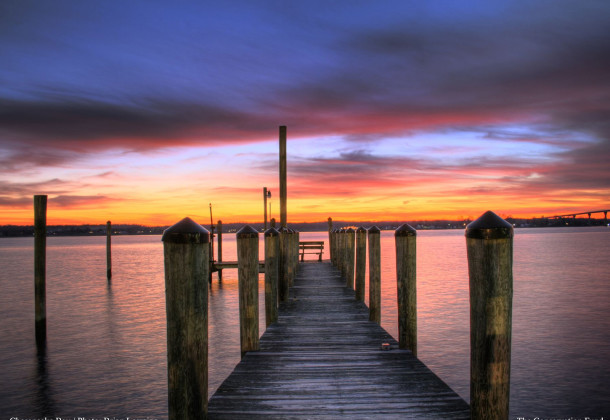$12M from USDA Headed to the Chesapeake Bay

Photo by Lorraine Brian, courtesy of The Conservation Fund.
WASHINGTON, DC –Congressman Steny H. Hoyer (MD-5) announced $12 million in federal funding from the United States Department of Agriculture (USDA) to improve water quality in the Chesapeake Bay, including $5.5 million to accelerate the Chesapeake Bay Watershed Implementation Plan.
The funding is part of the new USDA Regional Conservation Partnership Program (RCPP) to support wildlife habitat, improve the nation’s water quality, and enhance the environment.
“The future of the Chesapeake Bay plays a critical role in the health and well-being of Marylanders,” said Congressman Steny Hoyer. “Protecting the water quality of the Chesapeake Bay is essential to preserving and restoring the economic vitality of the Bay and this grant will help Maryland farmers contribute to that restoration for generations to come. This funding will help ongoing conservation efforts to keep our water clean, and promote economic growth in agriculture, the tourism industry, recreation, and other industries.”
The Chesapeake Bay Watershed is the largest estuary in North America. It covers 64,000 square miles and includes more than 150 rivers and streams that drain into the Bay. The Chesapeake Bay Watershed was designated last year as one of eight Critical Conservation Areas eligible for funding as part of the RCPP, an initiative authorized by the 2014 Farm Bill. The conservation projects as a result of the funding are designed by local partnerships to meet the natural resource challenges specifically for their area.
This federal funding follows a partnership Congressman Hoyer helped broker among The Conservation Fund, the US Navy, Maryland Department of Natural Resources and St. Mary’s County to purchase Shannon Farm, 212 acres on the Chesapeake Bay just south of NAS Patuxent River. The purchase buffers the naval air station from land uses that threaten the mission of the base while putting in place conservation measures, as well as providing opportunities for historical interpretation and recreational access along the Captain John Smith Chesapeake National Historic Trail.























